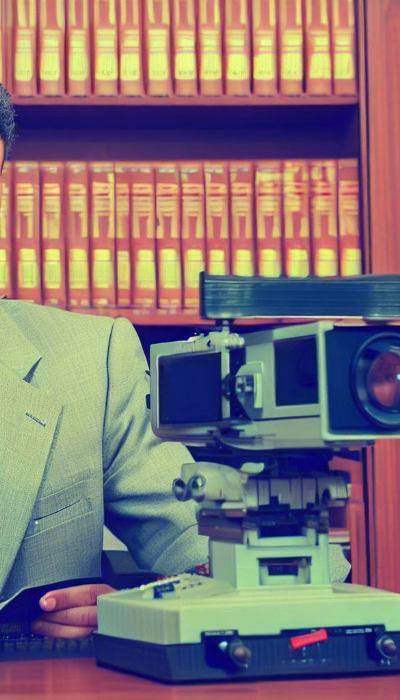The History of Legal Video
Step Back in Time

The advent of legal video deposition technology has revolutionized legal proceedings, offering a comprehensive view of witnesses’ testimonies through the capture of spoken words and nonverbal cues. This transformation has significantly enhanced the evaluation of credibility and truthfulness, leading to fairer outcomes. A game-changer in the legal field, the technology’s ability to facilitate remote depositions has paved the way for witnesses who are unable to attend in person, simplifying scheduling while maintaining the quality of evidence.
Video depositions hold a recognized and regulated position within the legal system, serving as credible and factual records of witness statements given under oath. These recordings prove invaluable for impeachment purposes if trial testimony contradicts the statements made during the deposition. They also expedite trials by reducing reliance on live witnesses, allowing attorneys to focus on other critical aspects of the case.
Technological advancements have propelled the video deposition experience even further, with features such as high-definition quality, synchronized transcripts, and efficient navigation tools. As remote communication technologies continue to advance, legal video deposition technology is poised to become even more accessible, accurate, and efficient, promising a streamlined legal process for all parties involved.
Legal Video Technology Timeline
1970s - 1980s
- Video technology starts emerging, but it’s expensive and not widely accessible.
- Some legal professionals experiment with using video equipment to record depositions.
1980s
- Attorneys begin recognizing the potential benefits of using video depositions, such as capturing witnesses’ body language and demeanor.
- Courts start to see occasional use of video-recorded depositions, though standards and guidelines are not well-established.
1987
- The Federal Rules of Civil Procedure (FRCP) are amended to include Rule 30(b)(4), allowing depositions to be taken using “sound, sound-and-visual, or stenographic means.”
- This amendment marks an important step toward formally recognizing video depositions in federal court proceedings.
1990s
- Video technology becomes more affordable and accessible, leading to increased use of video depositions in various legal cases.
- Courts and legal practitioners begin establishing guidelines and standards for the use of video depositions.
2000
- FRCP amendments further clarify and standardize the use of video depositions in federal court proceedings.
2000s
- Many states adopt their own rules regarding the use of video depositions in court proceedings.
- Technology continues to improve, contributing to higher quality video recordings.
- Depo Universe professionals shoot in 480p offering real-time DVD creation for clients.
2010s
- Video depositions become a common practice in both federal and state courts.
- Courts develop case law addressing issues related to the admissibility and use of video depositions.
- Video conferencing technology becomes more reliable and widely used, further facilitating remote depositions.
- Depo Universe professionals shoot in HD and offer same-day digital upload delivery.
2020s
- The COVID-19 pandemic accelerates the adoption of remote deposition technologies, including video conferencing.
- Courts adapt to remote proceedings, allowing for video depositions to continue despite restrictions on in-person gatherings.
- Depo Universe creates multi-site redundancy recordings to prevent data loss from power and internet loss interruptions.
2024
- Depo Universe proudly serves court reporting firms beyond the Tri-state area.
- Subscribe to our blog to keep up-to-date with all the changes and happenings in the video deposition world!
